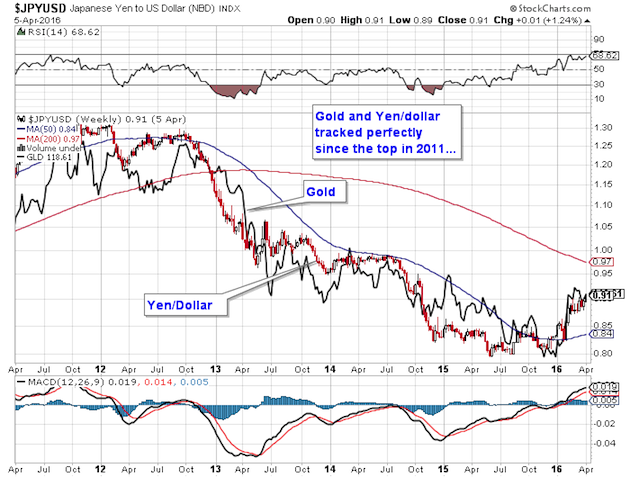
The epic battle between the bears and bulls rages on with this completely annoying seesaw action all dominated by the short-term interventions in the Japanese yen versus the U.S. dollar/Chinese yuan. I frame it as such because the yuan is pegged to the dollar and relations between the Chinese and the Japanese are about as good today as they were in 1894–1895, and not much better than in 1939. (Google search “Sino-Japanese Wars” to observe their history of animosity)
The good news, if there is any, is that this is a currency war, as opposed to a “boots on the ground” war, and I am convinced that it is a function of two large Cray supercomputers struggling to outmaneuver one another in manipulating the Japanese yen in one direction or another. The Japanese would love to see the yen collapse against the U.S. dollar, making Japanese goods cheap in terms of both U.S. dollars and Chinese yuan while placing the edge in international trade firmly in the lap of Tokyo. Beijing, however, wants the yen to soar against the dollar and the yuan, making Japanese goods less competitive and thus giving the edge to the Chinese.
In the old days, these two Asian gargantuans would be mining each other’s harbors and blowing up foreign embassies, but since mankind has reverted to more civilized methods of international conflict such as cyber-warfare and “Space Invaders-style” currency combat, the overt remnants of conflict can only be seen on a Bloomberg terminal.
The chart above overlays the gold price on top of the yen-dollar going back to the top of the precious metals markets in late 2011. It is astonishing how perfectly correlated the two are. The Bank of Japan has been working diligently to absolutely trash the purchasing power of the yen with QE-to-infinity policies and now negative interest rates. But, in the middle of last year, for some strange reason, the yen suddenly reversed, and after peaking in late 2011 at over 1.30 (at nearly exactly the point where gold topped), the yen has been moving higher versus the U.S. dollar.













Leave A Comment